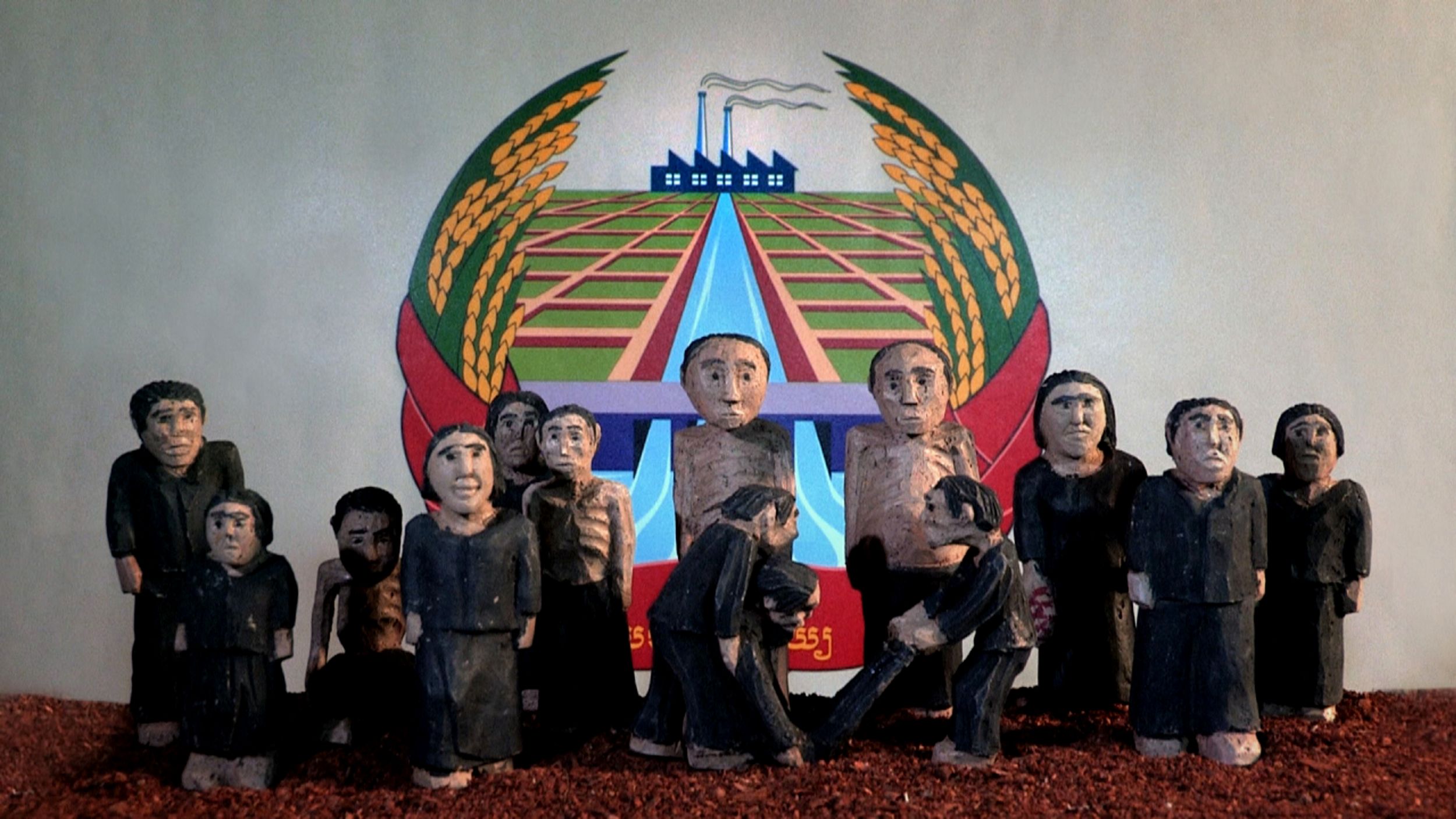
The Missing Picture
No reconstructed interviews with perpetrators and victims like in his earlier films and , but rather clay figures and found footage are the means by which Rithy Panh recounts his own history during the Khmer Rouge dictatorship. Halfway through life, the images of our childhood return, explains the voice-over – Panh is almost 50 – and those images are always bittersweet. But Panh has to create them himself, for besides the Khmer's propaganda, which included orchestrated documentaries and badly acted action scenes illustrating their triumphs, there is no recorded material from that time. The French voice-over is based on texts from Panh's book . We see a single photo cutout of brothers and sisters, from a happy time before Pol Pot's troops stormed the capital with their "pure" revolution. But as the voice-over explains, the revolution begins with purity and ends with hate. Hundreds of clay figures stand frozen in landscapes as the camera wanders over them. They're called paintings of death, silent witnesses filling in for those with a voice. Images like these also raise questions about representation. If all historic images and reconstructions are fictitious, how can you make a gruesome but invisible history comprehensible without resorting to bogus drama and sensation? What is the essence of it all?